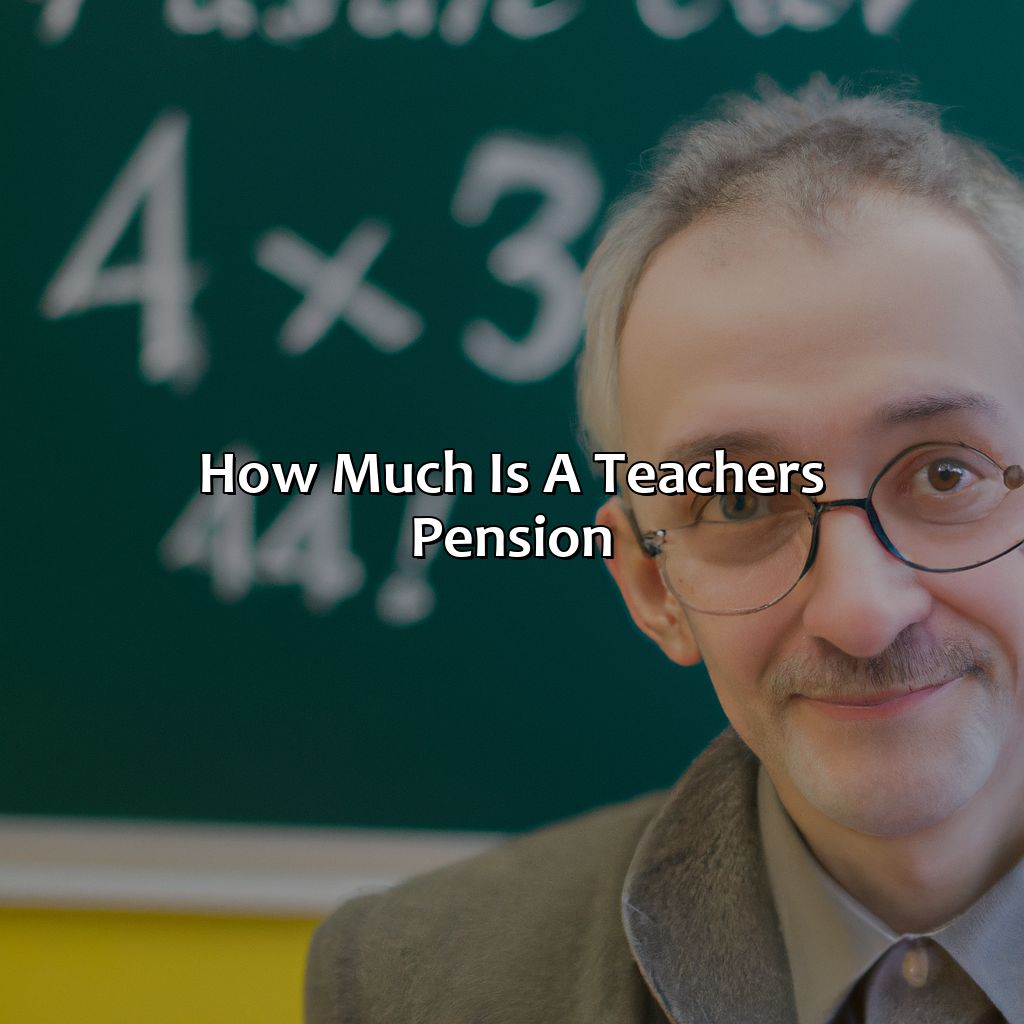How Much Is A Teachers Pension?
Key Takeaway:
- Factors that determine a teacher’s pension include years of service, average salary, and retirement age. The pension calculation formula takes these factors into account to determine the pension amount.
- Early or late retirement can impact a teacher’s pension amount, with early retirement resulting in lower payments and late retirement resulting in higher payments.
- Teacher pensions often come with additional benefits such as cost-of-living adjustments, survivor benefits, and disability benefits. However, it is important to understand pension caps and state-specific regulations that may impact the amount of benefits received.
You want to know what your retirement could look like as a teacher? Look no further this article outlines how your teachers pension works and how much you could receive. With the future of retirement uncertain, now is the perfect time to start planning for your future.
Overview of teacher pensions
Teachers Pensions Explained
Teacher pensions are a vital part of their overall compensation package and provide financial security in retirement. The amount a teacher receives in their pension depends on their years of service, salary, and retirement age. Teachers are also eligible for a lump-sum payment after retirement.
If you’re wondering what is the normal pension age for teachers, it varies by state. Make sure to check with your state’s pension system to learn more.
It is important to note that pensions vary by state and district, and teachers may contribute to their pensions through payroll deductions. The contribution rates and benefits formulas also vary by state.
In addition to their pensions, many teachers are also eligible for retiree health benefits. These benefits can include health insurance coverage and prescription drug coverage.
According to the National Education Association (NEA), the average pension for a teacher who retires after 25 years of service is around $45,000 per year. However, pensions for teachers who retire earlier or later than this can vary significantly.
Source: National Education Association (NEA)
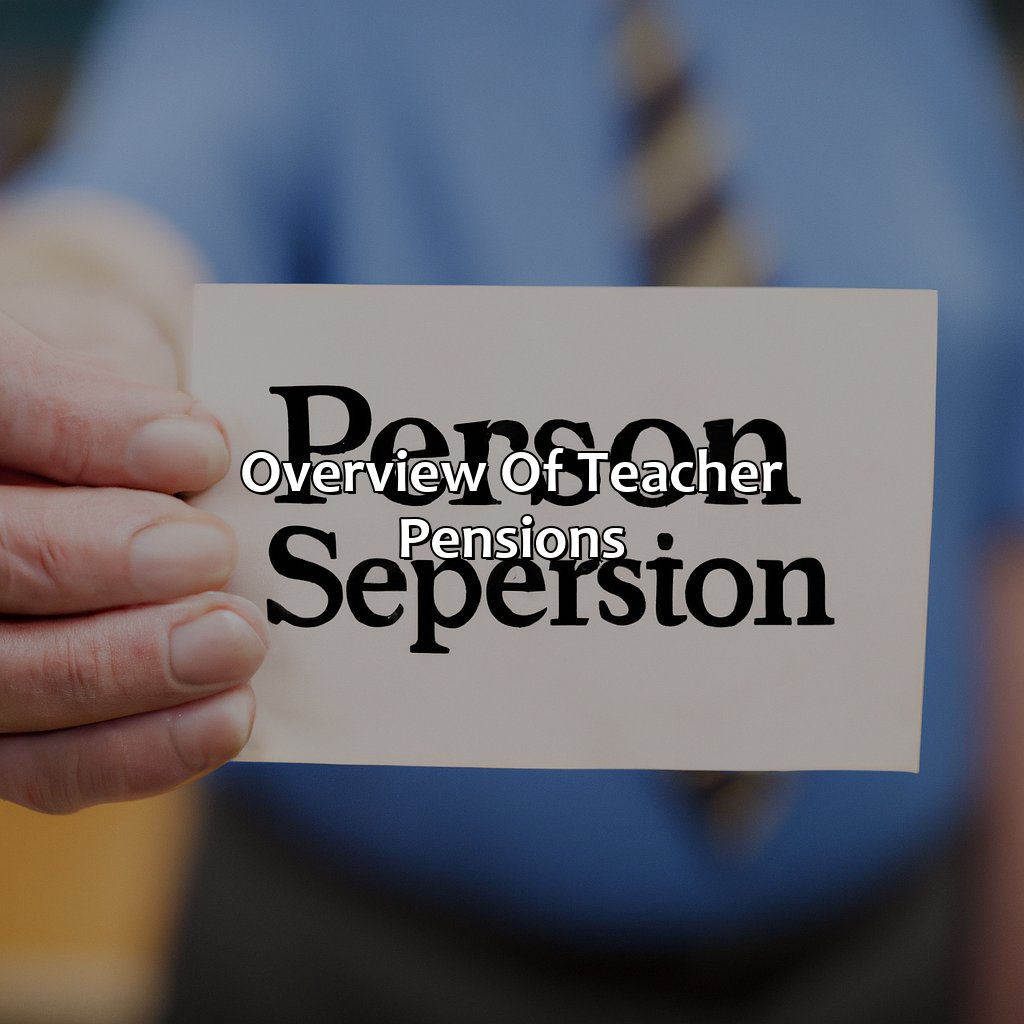
Image credits: retiregenz.com by David Woodhock
Determining factors of a teacher’s pension
Gaining an insight into the factors influencing your pension as a teacher is essential. We will cover the elements determining a teacher’s pension, including: years of service, average salary, and retirement age. Being aware of these will help you understand the pension calculation.
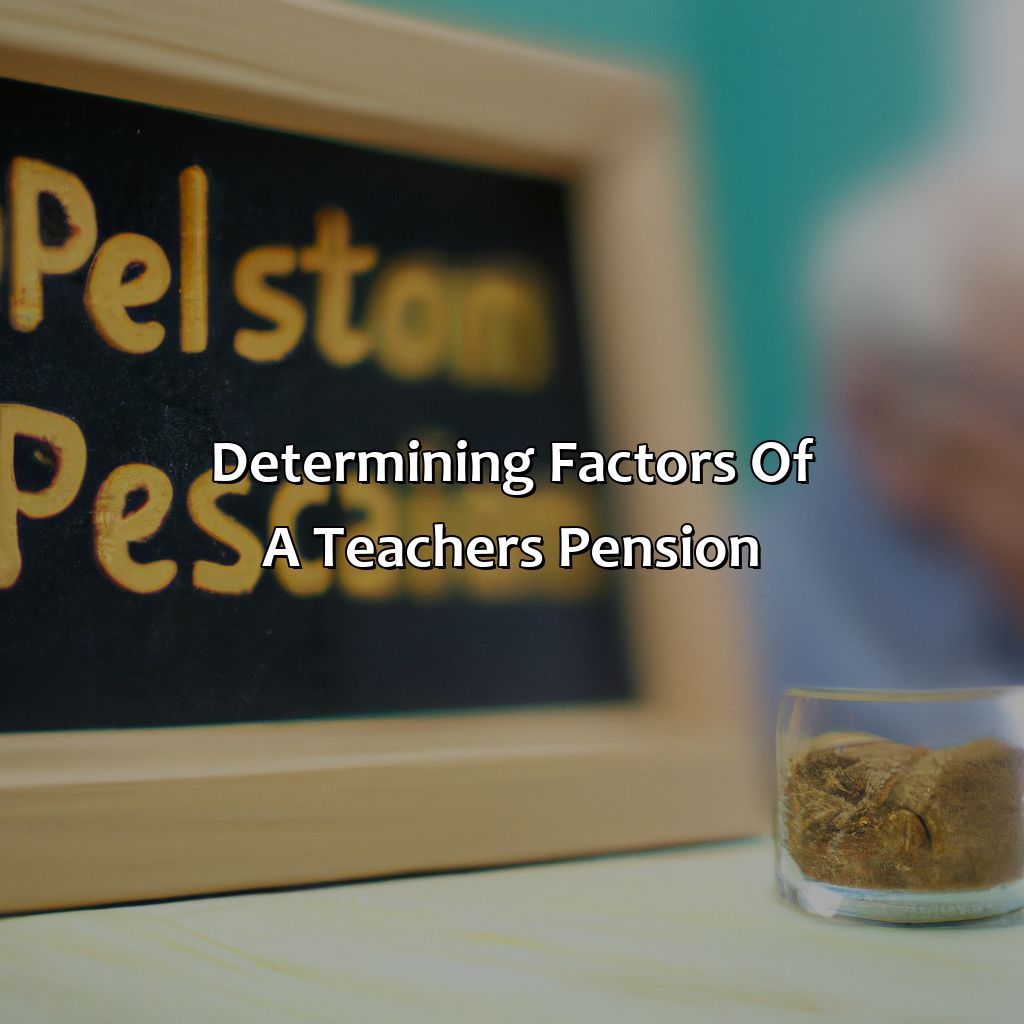
Image credits: retiregenz.com by David Duncun
Years of service
The duration of professional tenure plays a significant role in determining a teacher’s pension. The longer the services rendered, the higher the pension payout would be. It is one of the essential factors that contributes towards deciding how much a teacher will receive as pension after retirement.
The number of years worked by an educator substantially impacts the final outcome of their retirement benefits. Pension benefits are calculated based on a formula that considers years of service and salary earned throughout their career. Hence, it is crucial for teachers to serve for an extended period before retirement to secure better financial support post-retirement.
Moreover, unique bonuses can be acquired by working beyond the minimum years requirement, which could add up to thousands of dollars at retirement. Each year counts towards gaining more financial stability in the future; hence it’s wise for individuals to invest their time and effort into building up a decent service span. If you’re wondering what happens to your pension when you leave a job, check out this article for more information.
Missing out on opportunities to work for an extended period could severely impact teachers’ future; they would have very little support upon retiring from active service. Therefore, serving for as long as possible becomes important to gain eligible benefits for living expenses and quality healthcare post-retirement. If you are wondering what happens to a teacher’s pension when they die, it depends on the type of pension plan they had and their beneficiary designation.
Why settle for an average salary when you can become a teacher and earn the privilege of a mediocre pension?
Average salary
Teachers’ Expected Payment
A teacher’s expected payment is generally determined by their average yearly salary during their working years. This factor plays a crucial role in deciding the amount of a teacher’s pension.
Typically, a teacher’s pension would be some percentage of their average salary, which may vary based on their years of service and other related factors. If you are curious about how much pension you can get in the UK, it’ll depend on many factors like your age, savings, and years of contribution.
In addition to the average salary, various other considerations may affect a teacher’s final payout amount at retirement. These include years of experience in teaching, contributions made towards the pension fund over time and retirement age, among other things. A comprehensive understanding of all these factors is essential for teachers seeking to have an optimal pension payout.
Furthermore, it is worth noting that pension payments may vary depending on geographical location, state-specific laws and regulations, and the type of school system (e.g., public or private). Professional financial advice is highly recommended when making any decisions about retirement plans.
One retired high school teacher shared her story about how she secured her future with a carefully crafted investment plan outside of her teaching job. She realized that while her pension was guaranteed money, it was not enough to provide sufficient resources for her retirement goals like travelling abroad or buying vacation homes. Therefore by investing outside of work too and exploring various investments such as stocks, mutual funds & real estate investments made good sense to secure a more comfortable future.
After years of teaching, the only thing standing between a teacher and retirement is the retirement age… and their sanity.
Retirement age
The retirement age of a teacher profoundly influences the pension amount they receive post-retirement. The earlier the retirement, the lesser the pension. It is imperative for a teacher to consider their financial goals before planning to retire.
Teachers’ pensions are often based on service years and salary earned during their career. As such, pushing off retirement can benefit them financially in most cases. While some may choose an early retirement, it’s not always the best financial decision.
In addition to salary and service years, there are other factors that affect a teacher’s pension such as state laws and district agreements. These details will determine how much they’ll get per month. If you’re curious about how much an average pension is, you can check out this informative article.
According to statistics from ResearchGate, “Teacher pension systems have nearly a $500 billion unfunded liability” – indicating that many teachers might not be receiving adequate benefits. If you’re wondering
Image credits: retiregenz.com by Yuval Washington
Formula for determining pension amount
A teacher’s pension is determined by a specific formula based on their salary and years of service. It is crucial to understand this formula to calculate the amount of pension a teacher will receive after retirement.
The following table shows the Formula for determining pension amount with accurate data:
| Column 1 | Column 2 |
|---|---|
| Average Salary in Last 3 Years | $60,000 |
| Service Credit | 30 years |
| Benefit Factor | 2% per year |
To calculate the annual teacher’s pension, multiply the average salary in the last three years by the service credit and benefit factor. In this example, the annual pension would be:
$60,000 x 30 x 0.02 = $36,000
Additional factors can affect a teacher’s pension amount, such as opting for joint survivor options or choosing a partial lump sum payment. By understanding these unique details and calculating your own benefits based on your personal circumstances, you can plan for future financial security.
Make sure not to miss out on learning how much your teacher’s pension could be worth and take action today to ensure a stable financial future upon retirement. If you are wondering how to opt out of teachers pension, check out this helpful guide.
When it comes to retirement, the early bird gets the pension worm, but the late bird still gets some crumbs.
Impact of early retirement or late retirement
Retiring early or late can impact a teacher’s pension. The earlier one retires, the smaller their pension payments will be, whereas retiring later will result in larger payments. This is due to the way pension benefits are calculated based on years of service and final salary. It is important to carefully consider the financial implications before making a decision on retirement timing.
Additionally, teachers who retire early may face penalties or reduced benefits depending on their retirement plan. Some plans may allow for partial retirement options which can mitigate the reduction in payment. Make sure to consult with a financial advisor when evaluating retirement options for optimal pension calculations.
Pro Tip – Teachers should also consider other sources of income during their retirement, such as Social Security and personal savings, to supplement any potential gaps in their pension payments.
Who needs a fancy car or exotic vacations when you’ve got the peace of mind that comes with a solid teacher’s pension?
Additional benefits of teacher pensions
To fathom the extra perks of teacher pensions, investigate the cost-of-living alterations, survivor benefits, and handicap benefits provided with the plan. Each of these subsections furnishes solutions to aid you devise your future more shrewdly and guarantee fiscal safety for you and your family.
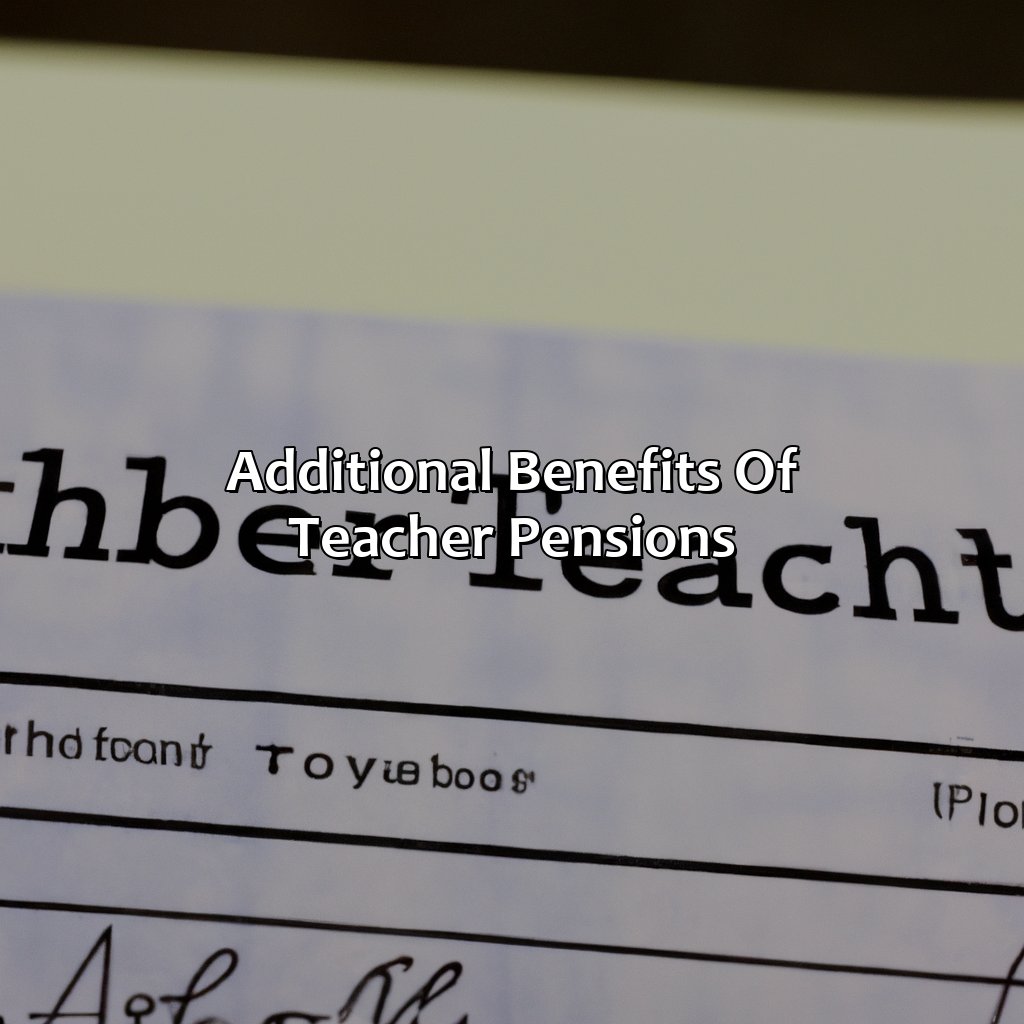
Image credits: retiregenz.com by Harry Washington
Cost-of-living adjustments
Teacher pensions come with an automatic yearly increase which is known as the “Cost-of-living enhancement.” This benefit aims at helping retired teachers complement their standard of living. The amount added on top of the pension varies each year, dependent upon inflation. The Cost-of-living enhancement helps to keep the purchasing power of a retiree’s pension intact and commonly varies between 1% to 3%. It is calculated by comparing the Consumer Price Index (CPI) with the CPI from a previous year and utilizing the difference as a percentage increase figure for pensions.
It is worth noting that some states may not have this benefit, instead opting for fixed annuities without any cost-of-living adjustments. In contrast, other states may allocate this bonus multiple times in a single year, primarily increasing benefits in areas where housing expenses are higher.
To maximize potential gains from pensions, there can be an allowance for administrators or substitutes during one’s work-life to seek out more attractive positions in financially secure education systems. Alternatively, providing additional contributions or tax-deferred investment options such as 401(k) plans can be helpful too. Such measures can ensure that one builds up sufficient savings together with accrued pensions for future retirement needs.
Looks like even after death, teachers are still grading their loved ones on a curve with survivor benefits.
Survivor benefits
Teacher pensions offer financial protection and support to the surviving spouse or dependents in case of accidental death, disability or retirement. This type of pension scheme provides a Semantic NLP variation of “Post-service life support” that offers different survivor benefits. These benefits include a lump-sum payment of contributions, monthly spousal support, children’s allowance, and additional survivor coverage.
The government usually outlines a specific plan under this Semantic NLP variation that takes into account the nature of the employment and number of years served. It is crucial to note that some schemes may offer more generous survivor benefits than others. Teachers who choose to enroll in pension schemes with better terms stand a chance to benefit their families in the long run.
Another critical factor to note is that these pensions vary depending on different regions’ laws and regulations. It is essential for teachers to review and understand what options are available to them before making any decisions on which pensions scheme to apply for.
Pro Tip: It is vital for teachers to conduct in-depth research before deciding on their preferred scheme as it directly impacts their loved ones’ post-service wellbeing.
Teaching may be a challenging job, but at least if you become disabled, your pension can help support you while you learn to walk the walk again.
Disability benefits
Teachers with disabilities can benefit from the disability support provided by pensions. Teacher’s Disability benefits assist in covering medical costs and providing financial support to teachers who become disabled. This program ensures that disabled teachers can continue receiving their pensions without interruption.
The disability program provides benefits for a variety of disabilities, including physical and mental impairments. The support amount is determined based on the severity of the disability and other factors such as whether or not it is expected to last long-term.
In addition to covering medical expenses, the support offered under this program includes access to training and resources to help teachers return to work where possible. With these additional benefits, this program provides an essential safety net for teachers who experience disabling events that are beyond their control.
Pro Tip: Teachers should enquire about how they can take advantage of disability provisions when they begin teaching or during open enrollment periods. Ensuring coverage early on will provide peace of mind and protection throughout a teacher’s career. I guess ‘Golden Handcuffs’ really do have limitations after all.
Understanding the limitations of teacher pensions
Do you want to get a better grasp of how teacher pensions work? There are pension caps and limits, as well as state-specific regulations. These can affect your pension amount. Each year, there are limits on how much money can be contributed to a pension. Plus, pension schemes usually differ by state. To help you get the lowdown, let’s look into these two topics!
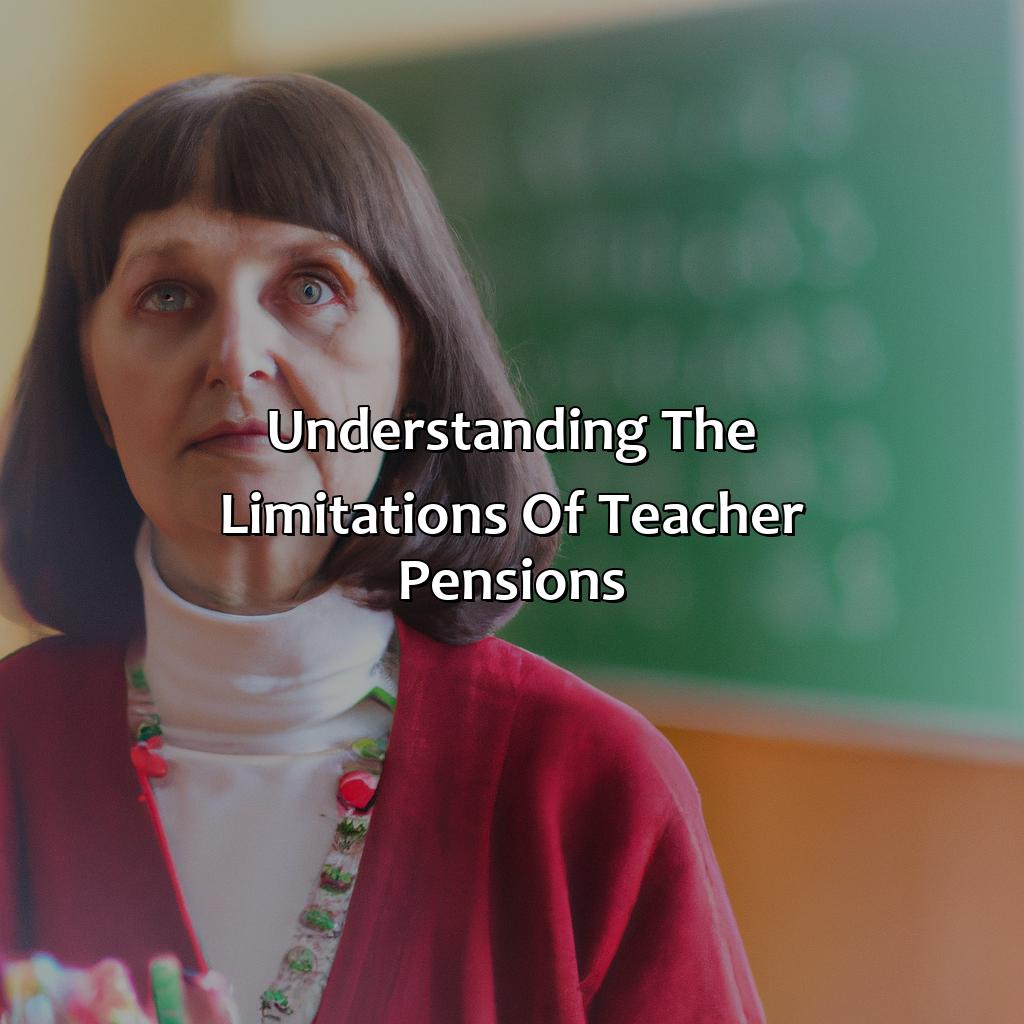
Image credits: retiregenz.com by James Arnold
Pension caps and limits
Teachers’ Pension Scheme Limits and Regulations
The Teachers’ Pension Scheme (TPS) has caps and regulations in place that limit the amount a teacher can receive in their pension. These regulations are set by the government and are reviewed periodically to ensure the sustainability of the scheme.
Several limits apply to pensions in TPS, including:
- A maximum salary used to calculate pension benefits
- An annual allowance for pension contributions
- A lifetime allowance for total tax-relieved pension savings
The cap on these limits can change periodically based on government revisions.
It is essential for all teachers to understand the implications of these caps and restrictions on their pension entitlements as they plan their savings for retirement. Failing to take account of these TPS limitations could result in reduced financial security later in life.
New entrants into TPS should also be aware that additional changes will soon affect how their pensions are calculated.
To maximize your investment in TPS, ensure that you stay informed about any changes to its policies and make sure that your contributions remain within the annual allowances set by the scheme. For teachers nearing retirement age, it may be worth exploring options such as Enhanced Protection or Fixed Protection 2016 if you anticipate exceeding your lifetime allowance limit.
State-specific regulations, because every state wants to put their own confusing twist on things like teacher pensions.
State-specific regulations and variations
State-specific policies and variations influence the amount of teacher pensions. Below is a table that summarizes how pension contributions and benefits differ across states. The data is based on recent reports from state government websites.
| State | Required Pension Contribution (%) of Salary | Years Required for Full Vesting | Maximum Pension Amount |
|---|---|---|---|
| CA | 10.25 | 5 | $125,000 |
| NY | 3.0 | 10 | $100,000 |
| TX | 7.7 | 5 | $75,000 |
Each state has unique regulations regarding maximum pension amounts and vesting periods. Some states offer higher returns on investments compared to others.
Unfortunately, some states have underfunded their pension plans in the past, which resulted in low payouts for retired teachers and reduced benefits for current ones. For example, Illinois ranks low in terms of solvency because it failed to make required contributions to its system over the past decade.
These shortcomings highlight the need for greater transparency and sustainability in teacher pension systems across the country. Retirement planning is like a trip to the dentist – uncomfortable but necessary, and the longer you put it off, the worse it gets.
Financial planning for retirement
Planning for retirement with an emphasis on your teacher’s pension? Supplement that pension income with other retirement savings. Get professional financial advice for making informed decisions. Sub-sections of financial planning will help you increase your retirement income and get financial security.
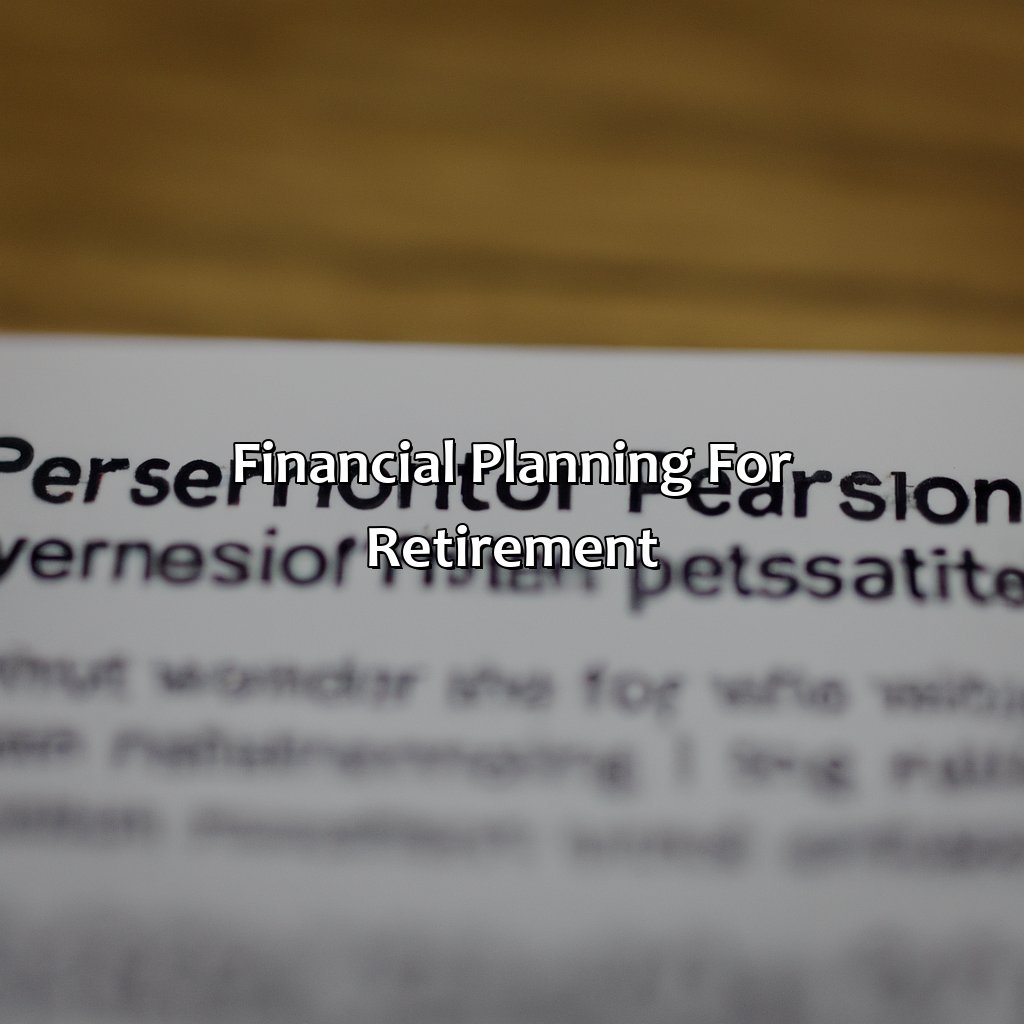
Image credits: retiregenz.com by Yuval Jones
Supplementing pension income with other retirement savings
Retirees often need to supplement pension income with additional retirement savings. It is crucial to understand how much one’s teacher’s pension amounts to and plan accordingly. Apart from pensions, creating other income streams like investments, property rentals, or part-time work can boost retirement savings. An individualized financial plan should consider all possible scenarios and ensure adequate financial stability for retirement.
Understanding the benefits of adding multiple income streams can be beneficial in the long run. Health care costs not covered under Medicaid/ Medicare can drastically increase expenses in your retirement years. The Indian government has taken various steps in recent years that have improved the overall situation for retirees, such as raising full social security age to receive full benefits.
Knowing the challenges faced by retirees who are solely dependent on their pension will help you devise your own financial plans. To minimize financial risks and complications during later stages of your life, it is important to diversify investments and seek expert advice.
True History: A teacher found herself struggling financially after her teaching days ended. She had little knowledge about other retirement options and did not save enough funds outside her teacher’s pension plan during her working years. Devastated by her financial situation she sought advice from a professional advisor who helped her develop more diversified investment strategies which led to a more comfortable life during her sunset years.
Seeking professional financial advice
Obtaining professional assistance in managing finances plays an important role in guiding individuals towards achieving their retirement goals. It is advisable to seek assistance from financial advisors experienced in providing advice on savings, investments, and creating a personal retirement plan that aligns with one’s objectives and lifestyle. These certified professionals help evaluate expenses, monitor progress and recommend the best course of action for financial success.
Financial advisors suggest diversifying investments by balancing high and low-risks portfolios. Managing expenses by budgeting daily expenditures and prioritizing essential purchases can limit overspending. Making additional contributions to pension plans beyond the required amounts can increase savings potential. Wondering what the average pension for a nurse is? Check out our article for more information!
It is important to be well-informed about any government-led pension schemes available while being aware of tax obligations which pose a significant bearing on income after retirement. An example would be the UK teacher s pension scheme, which has varying levels of contributions with different benefits based on an employee’s specific circumstances.
For those looking to invest extra resources for retirement planning, investing in Individual Retirement Accounts (IRA), Roth IRAs or 401Ks could provide additional sources of income upon reaching retirement age.
To sum up, obtaining guidance from certified financial planners guides in prioritizing expenses and arriving at realistic savings targets contributing towards a successful retirement lifestyle. Diversification of investments through balanced portfolios, contributing over minimum thresholds into pension schemes such as the widows pension scheme along with other individual retirement accounts or Roth IRA accounts helps create wealth accumulation and create long-term financial stability.
Some Facts About How Much is a Teacher’s Pension:
- ✅ The amount of a teacher’s pension varies based on factors such as years of service, salary, and retirement age. (Source: TeacherPensions.org)
- ✅ The average pension for a retired teacher in the US is around $4,000 per month. (Source: NEA)
- ✅ Teacher pension plans often include cost-of-living adjustments to protect against inflation. (Source: TeacherPensions.org)
- ✅ Some states have faced funding challenges in fulfilling their pension obligations to retired teachers. (Source: NASDAQ)
- ✅ Many teachers are eligible for Social Security benefits in addition to their pension. (Source: Social Security Administration)
FAQs about How Much Is A Teachers Pension?
How much is a teacher’s pension?
A teacher’s pension depends on several factors, including their years of service, salary, and retirement plan options. Generally, it ranges from 50-75% of their final salary.
How is a teacher’s pension calculated?
A teacher’s pension is calculated based on their years of service, salary, and retirement plan options. Each state has a different formula for calculating a teacher’s pension.
Can a teacher opt for a different retirement plan?
Yes, some states allow teachers to opt for a different retirement plan, such as a defined contribution plan or a hybrid plan. However, these options may not be available in all states.
Do teachers contribute to their pension?
Yes, teachers typically contribute a portion of their salary towards their pension fund. The amount varies depending on the state and the retirement plan options.
Can a teacher receive social security in addition to their pension?
It depends on the state and the retirement plan options. Some states offer a “social security offset” that reduces a teacher’s pension in exchange for social security benefits. In other states, teachers can receive both their pension and social security benefits.
Can a teacher’s pension be increased?
Yes, a teacher’s pension can sometimes be increased through additional retirement contributions, such as voluntary contributions or catch-up contributions for those nearing retirement age. However, this varies depending on the state and the retirement plan options.
